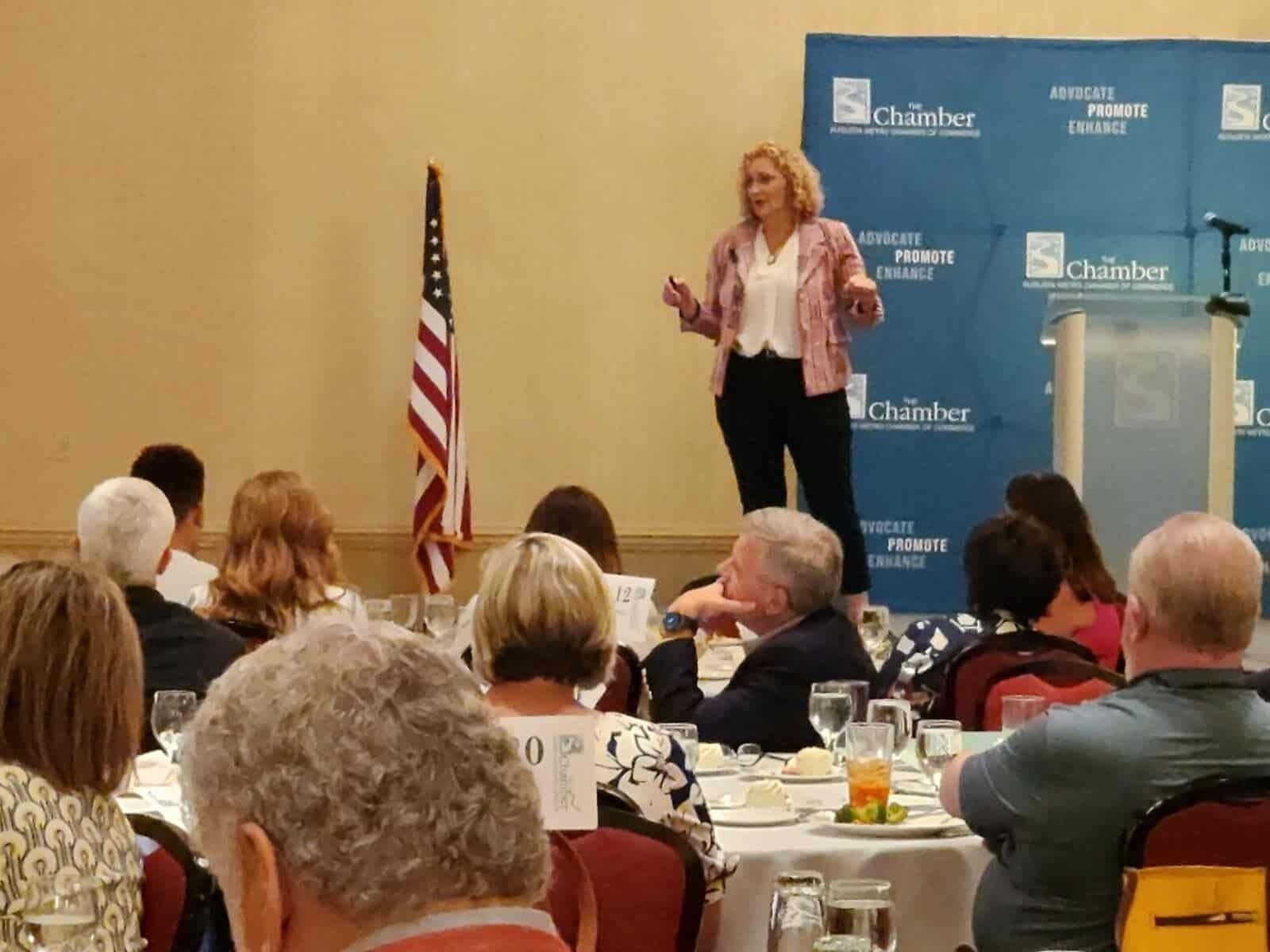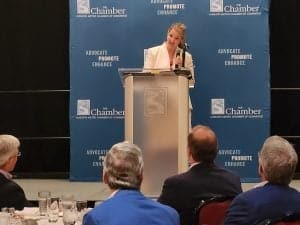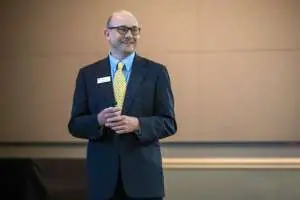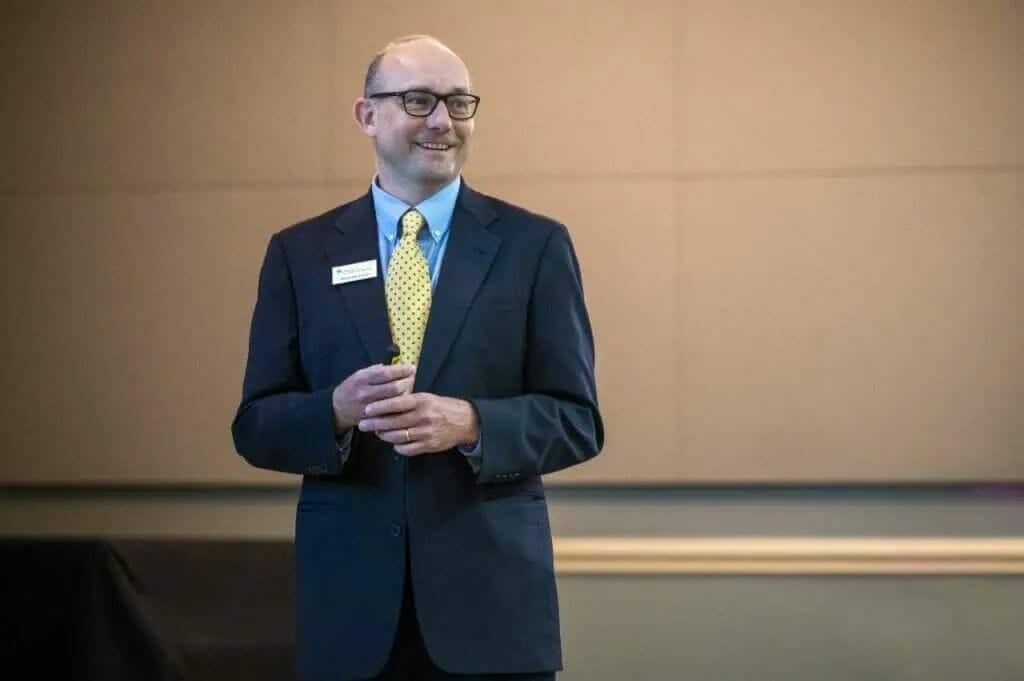Most local businesses have experienced employee shortages. Why are they continuing and what is the solution if any solution exists? Those were the million-dollar questions and the focus of the Augusta Metro Chamber of Commerce’s member economic luncheon.
It came as no surprise when guest speaker, Dr. Melinda Pitts, Research Center Director from the Center for Human Capital Studies at the Federal Reserve Bank in Atlanta, pointed to the COVID-19 pandemic as being responsible for the upheaval in America’s economy. Even with the end of the public health emergency on May 11, some segments of the economy continue to struggle, with most noticeable labor shortages, and on the supply side.
She said the Federal Reserve has two mandates, maximum employment and price stability. It helps to keep job growth slow, while focusing on price stability. However, they don’t want the job market to bottom out. Last Friday’s labor market report was strong, but not too strong.
“We added 253,000 jobs, that’s what we added in April,” she said. “So, the labor market isn’t quite as strong as we thought it was in the last few months, which is kind of good.”
The report also shows the two specific types of workers getting maximum use.
“We have this measure called part-time for economic reasons, which means you’re part-time. You want to be full-time, but all you can do is find a part-time job. That’s the lowest it’s been in the last 30 years,” she said. “And marginal workers, these are people that want to work, but they’ve given up, they’re discouraged. That’s really low. So, we’re utilizing all of our marginal and part-time hours. And we’re still not fulfilling our needs.”

Looking at generational employment numbers, there’s been a shift in baby boomers, those born between 1946 and 1964. She said traditionally, if they lose a job, they still, as she put it, “flow back in,” by finding new employment or returning to a previous employer. Recruiters say that’s not happening at the normal rate because some chose to retire. She said the pandemic made some realize they are not going to live forever.
Turning to the youngest generation of working age, the millennials, she said they want a balance between work life and home life.
“One thing we constantly hear from the people we talk to is all the things they do to attract millennials to their firms. Flexible work schedules, flexible vacations, gym memberships, and then they (employers) get upset when they (workers) had the audacity to use them,” she said, adding millennials generally grew up in a household with two working parents. “They see how hard it is. And a lot of them are like, ‘Oh, we want more balance.’”
Pitts said there are two groups of potential employees who face hurdles that can prevent them from being hired.
One group is teenagers. Age 16- and 17-year-old drivers, those with what is known as a provisional license, face restrictive driving laws, including how late they can drive. Many states, including Georgia and South Carolina, prohibit those teen drivers from driving alone after midnight. So, they can’t accept a weekend job that might require them to work after midnight, unless they have someone to drive them.
Another group with challenges is women with young children. She said it especially impacts lower-income, blue-collar jobs. While white-collar jobs have set schedules, blue-collar positions have less structured schedules, which means, there may not be daycare available.

“If your shift runs from two to 10, you can’t do it. Getting a subsidy for daycare from your employer doesn’t help you. Because there’s no daycare that runs those hours. Having daycare on-site in your company may not help. If you’re driving an hour to get to your company and you’re taking the bus to get there, do you really lug your kids to get there?” she asked. “So, figuring out a way to help your employees have daycare is going to go a long way. And mothers with young children are exceedingly loyal.”
Augusta Technical College President, Jermaine Whirl is a member of Pitts’ human capital advisory council. He agrees the labor shortage is continuing and they are finding ways to solve the problem locally.
“I think what we have done is partner with business and industry like Piedmont Augusta and working with them directly on nursing and trying to address that, trying to eliminate barriers or providing financial assistance and we’re doing wraparound to get more nurses trained,” he said. “Manufacturing of course you heard about a new building, working with all the manufacturers, we’ve started boot camps that are going to accelerate people to get them forklift training, OSHA training, all those things that get them employed quicker.”
In the end, she said there is no easy solution to end the labor shortage. She encouraged employers to keep looking for creative, innovative ways to attract and retain employees.











